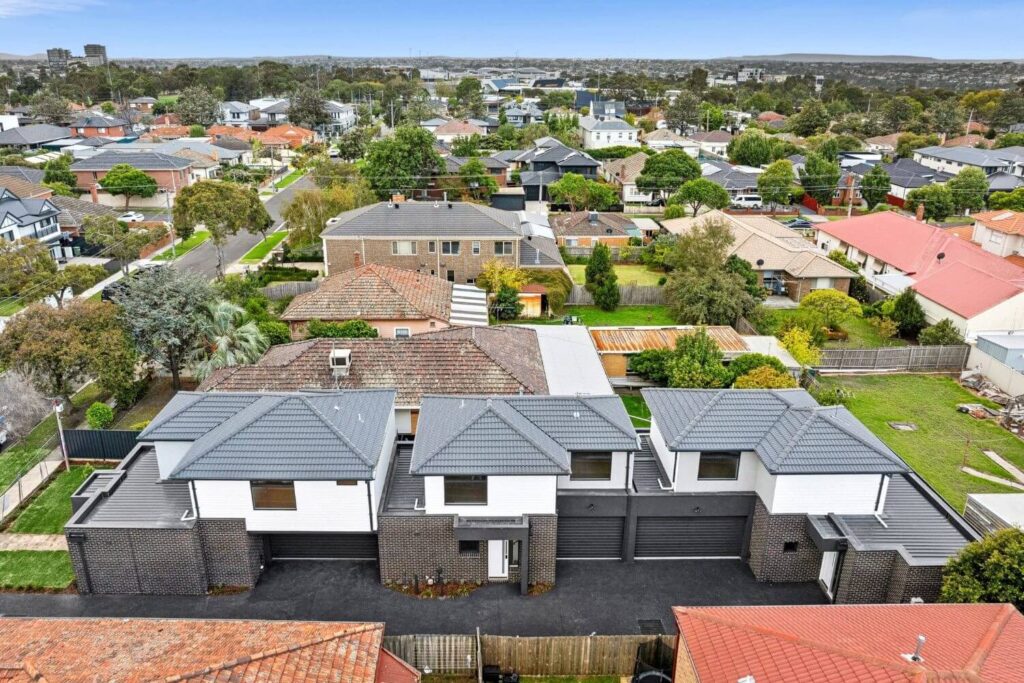What Councils Look for in a Subdivision Application (and How to Get Approval Faster)

Getting subdivision approval from the council is one of the most important — and often most misunderstood — steps in the development process. While many landowners focus on lot size and zoning, councils assess a much broader set of criteria when deciding whether to approve your subdivision. Understanding what they’re looking for (and how to address it clearly) can help you avoid delays, save money, and boost your chances of fast approval. At iSubdivide, we’ve helped hundreds of clients get their subdivision applications approved across Victoria. Here’s what councils are really assessing — and how to prepare a winning application. 1. Zoning Compliance ✅ What councils check: Is subdivision allowed under your current zoning? Different zones (e.g. General Residential, Neighbourhood Residential, Low-Density Residential) have different subdivision rules — including minimum lot sizes, dwelling density, and land use restrictions. ✅ How to get faster approval: Make sure your proposal aligns 100% with the intent of the zoning. 👉 Order a Site Assessment with us to check zoning and development potential. 2. Overlays and Site Constraints ✅ What councils check: Even if zoning allows subdivision, overlays can trigger extra requirements or restrictions. These may include: ✅ How to get faster approval: Identify overlays early. In most cases, you’ll need to engage specific consultants (e.g. a bushfire risk assessor or engineer) and include their reports in your application. 👉 A professional Site Assessment Report will map all relevant overlays and tell you exactly what’s required. 3. Lot Design and Access ✅ What councils check: ✅ How to get faster approval: Design access and lot shapes to meet council standards from the start. Consider future vehicle turning space, fire access, and waste collection. 4. Infrastructure and Services ✅ What councils check: 5. Planning Quality and Completeness ✅ What councils check: Councils assess the overall quality of your planning application. Missing documents, vague designs, or unclear site plans almost always result in delays or refusals. ✅ How to get faster approval: Submit a complete and professional application pack — including: 👉 Our team at iSubdivide can coordinate this for you and ensure all boxes are ticked before submission. ✅ Fast-Track Your Approval: Start with the Right Tools Before you spend thousands on plans or consultants, use the right tools to check feasibility: 🔹 Subdivision Calculator — Find out approximate costs to obtain the appropriate permits🔹 Site Assessment Report — Get zoning, overlays, access, all reviewed in one place🔹FREE Victorian Residential Property Development Checklist — Stay organised and confident at every step Need help with council approval? Our team at iSubdivide can handle everything — from feasibility to final lodgement. We know what councils want, and how to present it professionally. Let us take the guesswork (and the paperwork) off your hands. 📞 Talk to us today and move your subdivision forward — faster.
How to Maximise the ROI on Your Subdivision Project

Subdividing your property isn’t just about creating more land — it’s about creating more value. Whether you’re subdividing to sell, build, or hold, the ultimate goal is to generate the highest possible return on your investment (ROI). But with rising construction costs, council red tape, and market fluctuations, it’s easy to leave money on the table. At iSubdivide, we’ve helped hundreds of landowners unlock the full potential of their property — and we’ve learned that success comes down to smart planning, not just good luck. Here’s how to maximise the ROI on your subdivision project, step by step. 1. Start with the End in Mind Before you lodge any plans or hire a surveyor, ask yourself: Your exit strategy affects every decision — from design layout to financing. A duplex might suit one investor, while two vacant lots might be better for someone else. ✅ Tip: Choose a strategy that matches your financial goals, risk tolerance, and timeline. 2. Know What’s Possible — and Profitable Not every subdivision will make money. Factors like zoning, overlays, slope, and service access can dramatically affect project costs and resale value. That’s why it’s critical to do a Site Assessment and Feasibility before spending a cent. A proper assessment should answer: ✅ Solution: Use our Subdivision Calculator for a quick check — or get a professional Site Assessment and Feasibility to run the numbers in detail. 3. Design with the Buyer in Mind Once you know your block’s potential, smart design is key. A poorly designed layout can kill resale value — even if it’s technically compliant. Design tips to maximise ROI: ✅ Tip: Ask your planner or designer what type of layout will appeal most in your suburb. 4. Don’t Overcapitalise Many landowners assume building the biggest possible house or adding high-end finishes will boost profit — but that’s not always true. If your build cost exceeds local market value, your ROI shrinks fast. ✅ Tip: Know your suburb’s ceiling price. Keep construction costs aligned with what buyers will pay. 5. Time It Right The property market is cyclical. Timing your subdivision and sale (or rental) with the market can significantly impact your return. Key timing factors include: ✅ Tip: Speak to a local real estate agent or property strategist to align your project with peak demand. 6. Engage the Right Professionals Early Poor advice (or late advice) can derail your project. Work with a team that understands subdivision from both planning and profit perspectives. At iSubdivide, we connect you with experienced planners, surveyors, and consultants who focus on cost-effective, council-compliant, and profit-driven results. 7. Plan for All Costs — Not Just the Obvious Ones Subdivision isn’t just permits and fencing. You’ll also need to factor in: ✅ Ready to Maximise Your Return? Before you commit to anything, check your potential costs. Our free Subdivision Calculator gives you approximate costs to engage iSubdivide to obtain the relevant permits and also takes into consideration your third party fees. Want a more detailed plan? Order a customised Site Assessment Report tailored to your goals, council, and block. 📥 Download our FREE Victorian Residential Subdivision Checklist to stay organised and avoid costly mistakes. Need expert help? We’re here to simplify the process, help you maximise your return, and avoid expensive errors. Talk to the iSubdivide team today — and turn your land into a smarter investment.
Top 7 Mistakes People Make When Subdividing Property

Subdividing property can be a smart way to unlock extra value from your land — whether you’re looking to sell a portion, build additional dwellings, or maximise long-term rental income. But it’s also a complex process with lots of moving parts, and even a small oversight can cost you time, money, and development potential. At iSubdivide, we speak to hundreds of landowners each year, and we’ve seen a clear pattern: many first-timers (and even experienced investors) fall into the same traps. Here are the top 7 most common mistakes people make when subdividing property — and how you can avoid them. 1. Not Checking Zoning and Overlays First Many people assume they can subdivide based on land size alone — but that’s just one piece of the puzzle. Zoning controls what you can legally build, while overlays like bushfire risk, flooding, or heritage protections can limit development. ✅ Solution: Get a professional Site Assessment for deeper insights. 2. Underestimating Costs and Cash Flow Needs Subdivision can involve tens of thousands of dollars in fees, permits, infrastructure upgrades, and consultants — and these costs often hit earlier than expected. Common surprise expenses include: ✅ Solution: Use our free Subdivision Cost Calculator to plan ahead and avoid cash flow crunches. 3. Skipping a Feasibility Assessment Jumping into a subdivision without a clear feasibility plan is like building a house without a blueprint. You need to know: ✅ Solution: A detailed Feasibility helps you make informed decisions and avoid overcapitalising. 4. Misjudging Access and Easement Requirements Even if your land size and zoning allow subdivision, your block still needs: These factors can completely change your layout or reduce the number of lots. 5. Relying on Verbal Advice or Online Forums Subdivision rules vary significantly between councils — what works in one area may be completely rejected in another. Yet many people rely on outdated advice or internet hearsay. ✅ Solution: Always seek tailored advice based on your property, your council, and your goals. That’s what our team at iSubdivide specialises in. 6. Leaving Consultants Too Late People often wait until problems arise before involving town planners, surveyors, or engineers — but by then, poor decisions may already be locked in. ✅ Tip: The earlier you involve experts, the more flexibility (and fewer surprises) you’ll have. 7. Not Having an Exit Strategy Some landowners jump into subdivision without thinking ahead: Not knowing your end goal can lead to indecision, budget blowouts, or poor returns.. Next Step: Check Your Block with Subdivision Calculator Avoid costly mistakes by starting with the right tools. Use our free Subdivision Calculator to see what’s possible for your land. Want a deeper look? Order a personalised Site Assessment Report that gives you everything you need to make confident decisions. 📥Download FREE Victorian Residential Property Development Checklist to stay on track from start to finish. Need Help?Talk to our friendly team — we simplify the process, handle the legwork, and help you get the most out of your land
